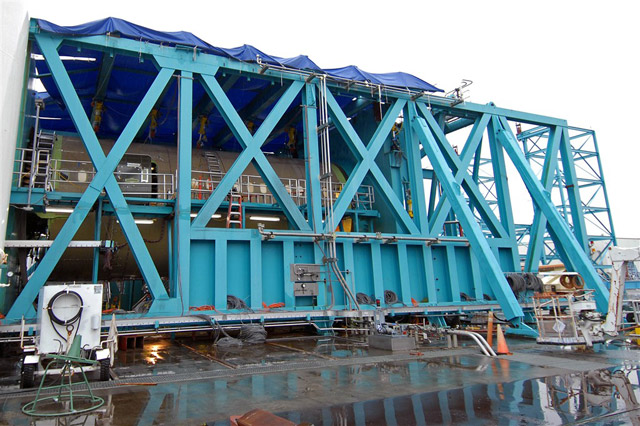The composite technology, design and construction of the 787 was proven during a series of testing scenarios conducted beginning in late 2007 and concluding this week. The tests were performed on a composite fuselage test section and are part of Boeing’s certification efforts for the 787.
“The tests were very successful – they couldn’t have gone any better,” said Kevin Davis, 787 fuselage authorized representative and leader of the testing.
Boeing engineers proved the composite barrel design through a series of incremental tests that first took the barrel to limit load, a test condition that simulates the most extreme conditions expected to be experienced in the life of the airplane.
Next, the test article was taken to 150 percent of limit load – a condition called “ultimate load,” the level required for certification.
Finally, the team pushed the composite section past ultimate load well beyond ultimate load to a destruct-condition maneuver beyond two and a half times the force of gravity.
Testers observed audible indications of damage as the test progressed but the piece did not reach the level of destruction that had been anticipated. Boeing engineers now are performing an extensive inspection of the barrel and analysis of test results.
This robust test program is key to clearing the Dreamliner for first flight. Some testing on the composite barrel section will continue, but it is at Boeing’s option for additional learning. Additional static testing is required, and will be conducted, on a full airplane structure prior to first flight.

Source & Photo Credit: Boeing
